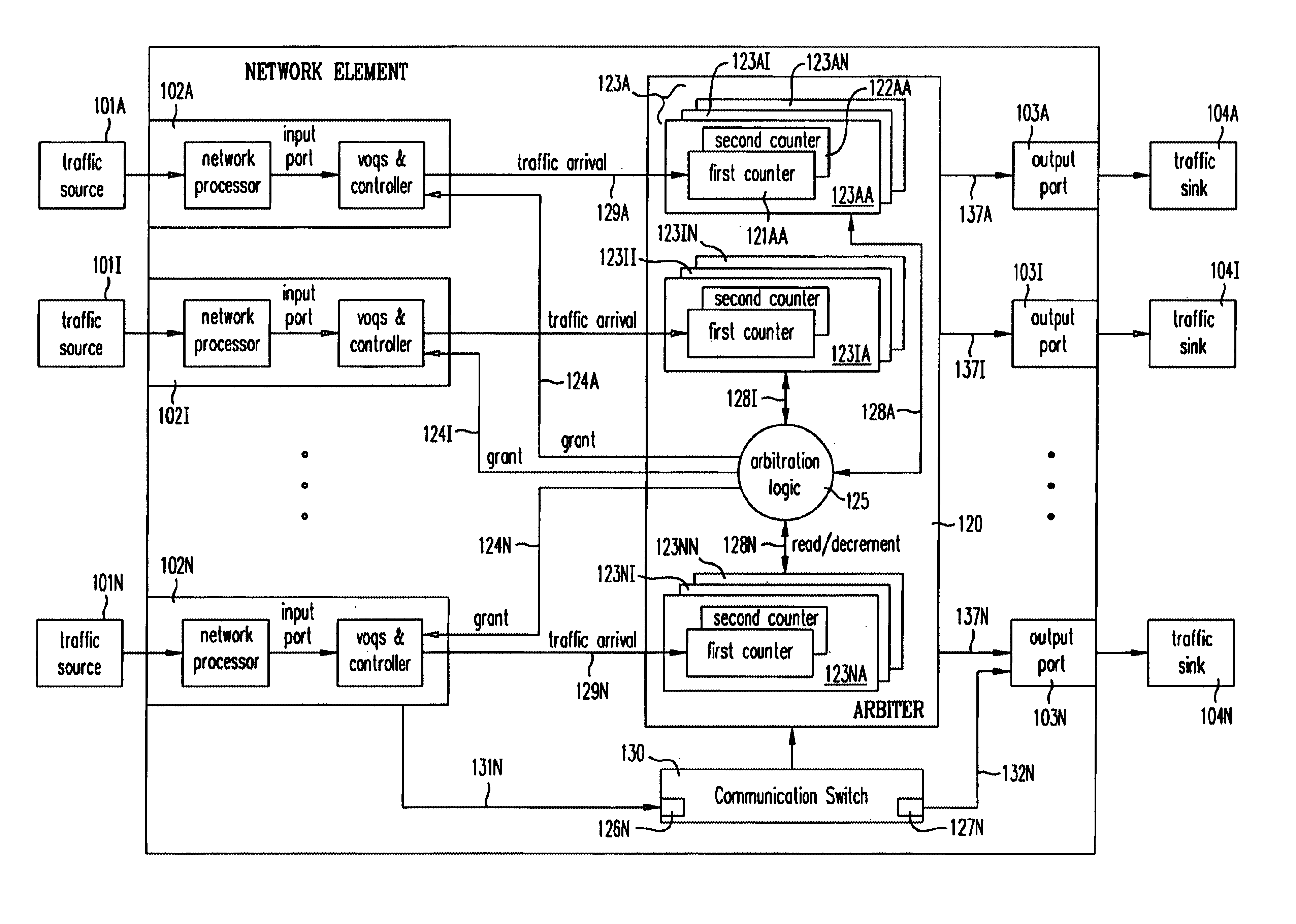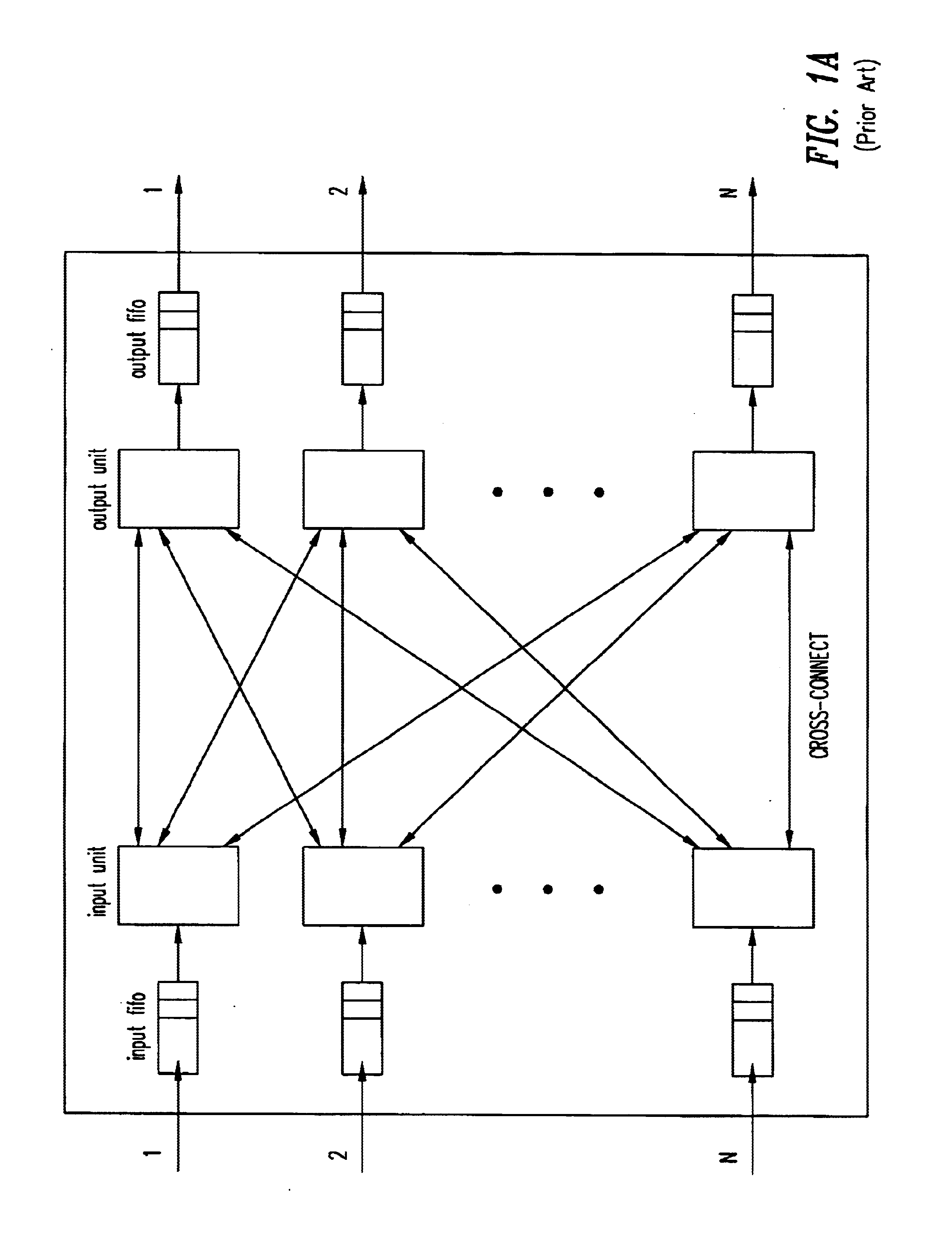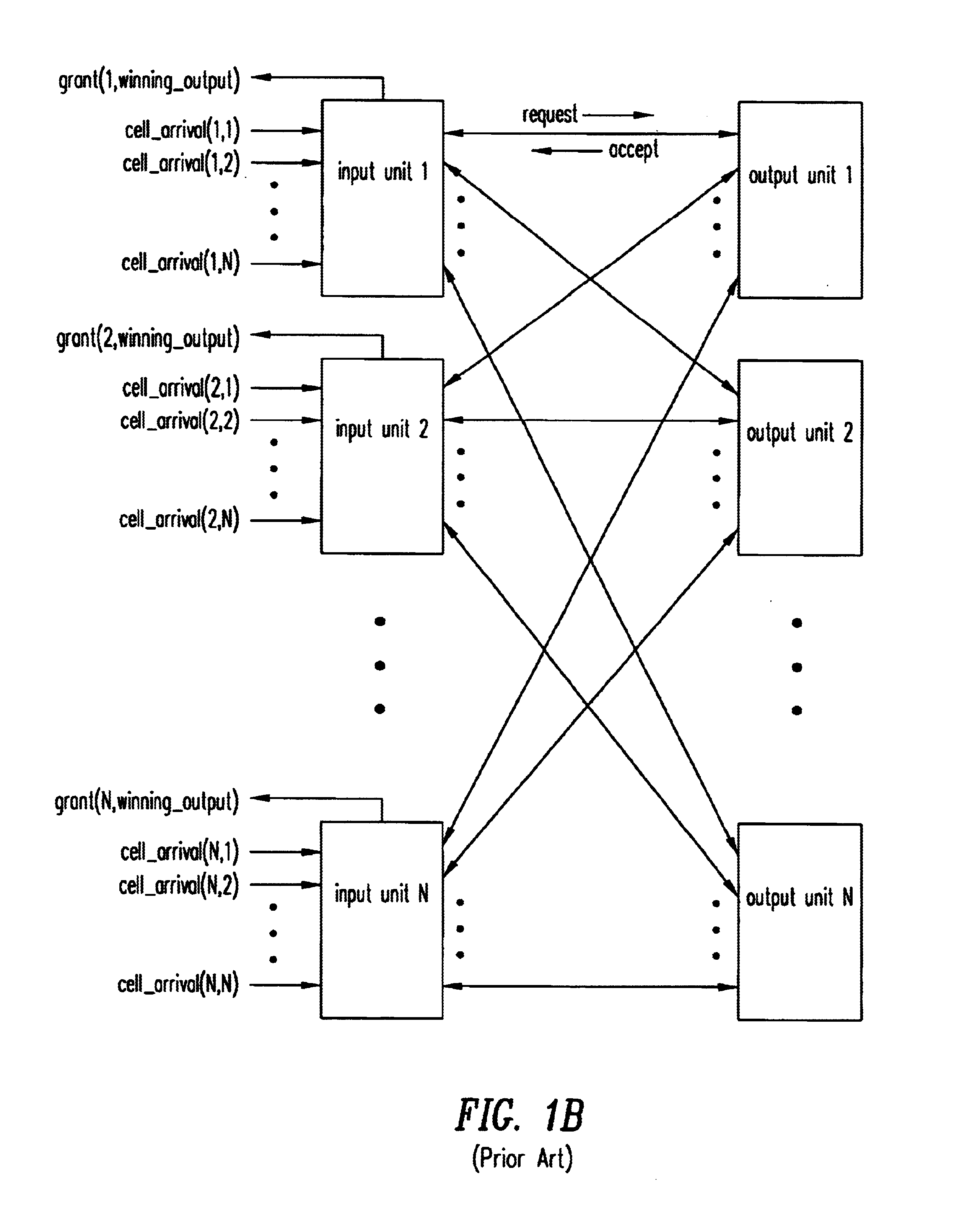Arbiter for an input buffered communication switch
a communication switch and buffer technology, applied in the field of buffer switch for input buffered communication switch, can solve the problems of only practical voq switch, only cost effective solution, and increase the probability of “synchronization" the effect of increasing the bandwidth allocation of the flow
- Summary
- Abstract
- Description
- Claims
- Application Information
AI Technical Summary
Benefits of technology
Problems solved by technology
Method used
Image
Examples
Embodiment Construction
[0027]In certain embodiments of the invention, a network element is architected to use a virtual output queued (VOQ) switch and an arbiter 120 (FIG. 2A) that maintains a pair of counters for each flow (buffered in a virtual output queue) at each input port. For example, a pair of counters 121AA and 122AA (together referred to as counters 123AA) are maintained for a first flow “A” (not shown or labeled in FIG. 2A) through a first input port 102A. In a similar manner counters 123AI are maintained for the ith flow through first input port 102A, and counters 123AN are maintained for the Nth flow through first input port 102A. Furthermore, counters 123IA are maintained for the first flow in the ith input port 102I, and so on.
[0028]Of the two counters 123IJ that are maintained for each traffic flow, one counter (also called “first counter”) indicates an ideal transfer of traffic regardless of the discrete size of each unit of traffic, and another counter (also called “second counter”) tra...
PUM
 Login to View More
Login to View More Abstract
Description
Claims
Application Information
 Login to View More
Login to View More - R&D
- Intellectual Property
- Life Sciences
- Materials
- Tech Scout
- Unparalleled Data Quality
- Higher Quality Content
- 60% Fewer Hallucinations
Browse by: Latest US Patents, China's latest patents, Technical Efficacy Thesaurus, Application Domain, Technology Topic, Popular Technical Reports.
© 2025 PatSnap. All rights reserved.Legal|Privacy policy|Modern Slavery Act Transparency Statement|Sitemap|About US| Contact US: help@patsnap.com



